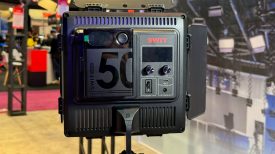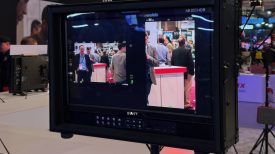By site editor Dan Chung:
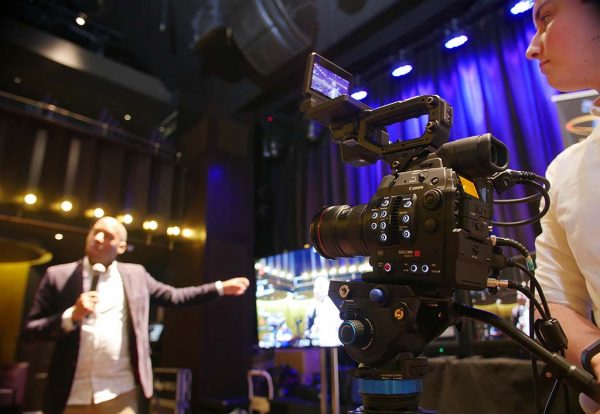
Canon’s Dual Pixel CMOS AF (DAF) on the original C300 and C100 was groundbreaking. They were the first large sensor video cameras which had accurate enough autofocus for me to actually use on productions. Other competing manufacturers introduced autofocus, but it was still too hit and miss and I would prefer to use manual focus instead. This comes as no surprise to anyone who has followed Canon’s dominance of the digital SLR market. The main reason their cameras are still the number one choice of many action photographers is the speed and accuracy of the AF systems Canon make.
Good as the original C300 and C100 with DAF systems were they were still not really good enough in many common video situations. This was mainly because the autofocus only worked if the subject was in the centre of the frame. Any off-centre subject, such as your typical interviewee, could not be tracked using the AF system. The only way to work off-centre subjects was to point the AF spot at the subject, lock the focus, then recompose. This clearly doesn’t work if your subject is moving around. In addition the old DAF had little control over the speed of focus transitions. Part of the beauty of a nice focus pull when done by hand is that the operator can adjust the speed of transition to match the mood and feel of the shot.
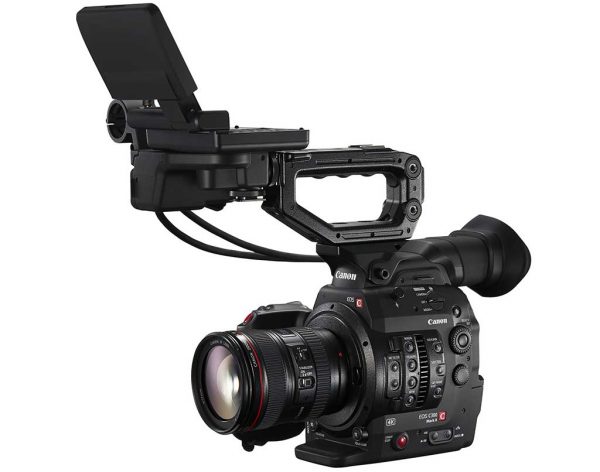
Enter the C300 mkII. The key features include an all-new sensor, 4K internal recording and improved build of the top handle and connection cables. But for me, the key development is that the C300 mkII has a much more advanced autofocus system. The aim of Canon’s designers was to make something that behaved in a far more natural way and was good enough to use for serious shooting. Now the system can focus anywhere within the central 80% of the frame. In addition the camera can now track faces in its continuous AF mode. If there is more than one face on screen then it will detect it and offer the user the choice of which face to focus on by toggling between them. The speed at which this camera shifts focus can be set faster or slower, mimicking human control.
If you really don’t want to use the autofocus, then the C300 mkII has another trick up its sleeve. There is an assisted manual focus option that aids the operator to focus. If you are using a compatible EF lens then markers appear on screen near the subject. Little arrows indicate which way to focus and when good focus has been achieved. This sounds complex but is really easy to get the hang of.
We saw C300 mkII prototypes working at the NAB show earlier in the year, but I was keen to really try out the AF system for myself in conditions that I typically work in. Luckily, last week I was invited to a Canon event organised by UK dealer Top Teks. The C300 mkII was on hand with Canon Explorer Simeon Quarrie operating it. The camera was still pre-production but between us we were able to play around and see just how good the autofocus system is. Unfortunately we weren’t allowed to record in the camera or externally, but I was able to shoot the screen and this gives a pretty good indication of what it was like. Apologies if it looks out of focus from time to time – this isn’t the camera, rather the low quality of the screen recording. I can assure you it really was nailing focus most of the time.
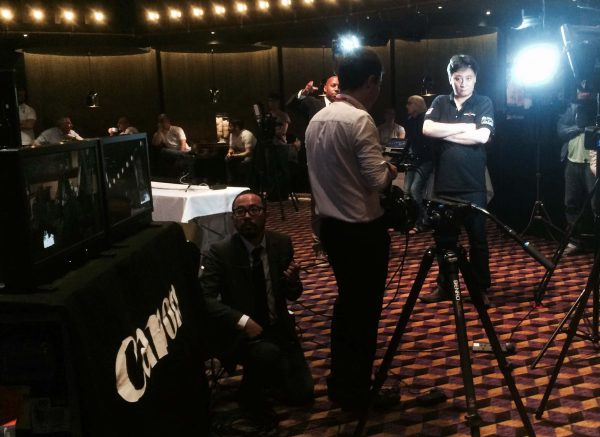
For the first test we used a Canon 24-70mm f2.8 L and a Litepanels Astra LED light for illumination in an otherwise poorly lit room. I really wanted to see how the AF tracks in a typical interview where the subject (in this case me) moves around a lot while talking. The system worked incredibly well, locking onto the eyes almost all the time. The only time it shifted focus was when I placed my hand in front of my face for a longer period. A brief flash of the hand in front of the face didn’t seem to phase the camera’s brain. In short, I was amazed. I can really see this being used all the time for interviews and it does a better job than I would have done by eye.
Next, I tried the face detection AF with two subjects (me and the man from Canon). Simeon toggled between us using the jog dial on the camera. You can see how the focus shifts when he selects the subject. If there are more people in frame then more boxes appear on screen and you can again toggle between them. We tried different speeds and you can see how it changes the transition time. Overall I think it looks pretty natural and again I was impressed. If there is one thing I would like to have seen that isn’t on the C300 mkII it is a touch focus on the camera’s own screen. This is despite the consumer level EOS70D DSLR having it built-in. You can, however, perform touch focus using a connected tablet running Canon’s remote interface – but it would have been far better to have it on the camera itself as well.
Lastly, we tried the assisted manual focus. This is as big an innovation as the DAF and I found it worked really well. I asked Canon reps whether lenses other than AF EOS ones will work. They said that Cine lenses and manual glass won’t. I asked specifically about the CN7x17 KAS S 17-120mm Cine servo zoom which can be purchased with an EOS mount with electronic contacts. I was told that there may be a possible solution for lenses like this in the future that would allow them to work with the system, but there was no firm commitment.
I think that despite all the naysayers who claim that we would never see autofocus used for ‘serious’ production, Canon have finally made a system that will see autofocus commonly used by pros on a daily basis. Solo operators working on factual programmes will probably benefit the most, although there are plenty of other applications such as brushless gimbal and Steadicam work. Hopefully the technology won’t take too long to filter down to the cheaper offerings in the Canon range.
One other thing I learned while playing with the camera is that it finally displays the waveform monitor in the built-in EVF. This is something the other C series cameras didn’t do and it’s great to see Canon listen to users and add it in here.
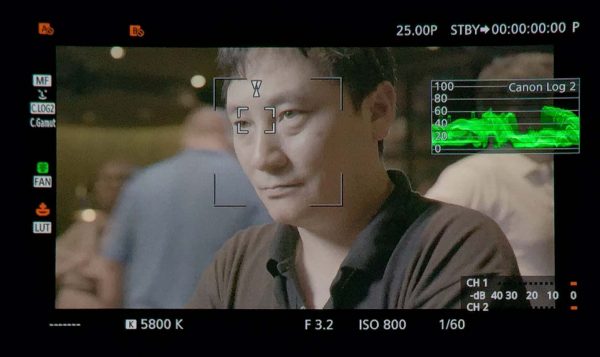
Hopefully, the autofocus system in the final production camera will live up to the promise I witnessed at the Top Teks event. The camera is still not scheduled to ship until September, but to me it’s clear that Canon intend to make autofocus a key selling point and something that separates it from rivals like the Sony FS7 and F5/55. Whether enough buyers will see this as a ‘killer feature’ remains to be seen.
Videos and stills in this article by Elliot Smith.




